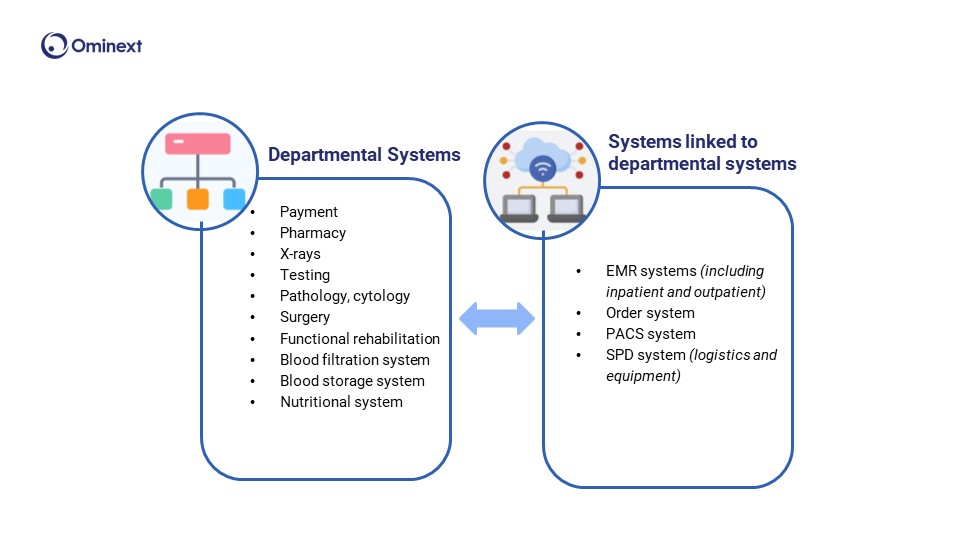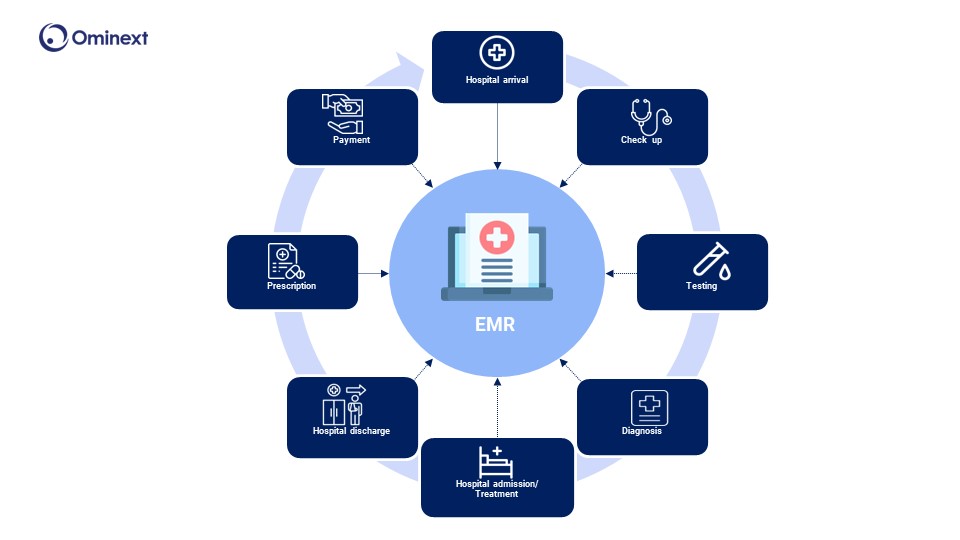Basic Components of Hospital Information System
In today's rapidly advancing healthcare landscape, the efficiency and effectiveness of patient care heavily rely on the seamless integration of technology within medical institutions. One of the pivotal elements driving this transformation is the Hospital Information System (HIS). A comprehensive HIS serves as the backbone of modern hospitals, enabling the streamlined management of patient information, administrative tasks, and clinical operations.
This blog will explore the basic components of a Hospital Information System, shedding light on how each element contributes to improving healthcare delivery, enhancing patient outcomes, and optimizing hospital workflows.

I. Departmental Systems
Payment
A Payment System in HIS refers to the integrated set of procedures, software, and technologies designed to manage and process all financial transactions between the hospital and patients, insurance companies, and other payers. It ensures that payments for medical services, treatments, and other hospital-related expenses are accurately billed, processed, and recorded
Pharmacy
A Pharmacy System in a Hospital Information System is a specialized component designed to manage the medication use process within a hospital setting. It integrates various functions related to prescribing, dispensing, administering, and monitoring medications to ensure safe, efficient, and effective pharmaceutical care.
Image Diagnosis
An Image Diagnosis System in HIS refers to the integrated software and hardware infrastructure that facilitates the handling of medical imaging data within a hospital. This system encompasses the processes involved in capturing, storing, managing, and interpreting medical images such as X-rays, CT scans, MRIs, ultrasounds, and other diagnostic imaging modalities.
Testing
A Testing System in HIS refers to the integrated software and hardware infrastructure that facilitates the management of diagnostic tests, including laboratory tests (e.g., blood tests, urinalysis) and other diagnostic procedures (e.g., pathology, microbiology). This system encompasses the end-to-end workflow from test ordering to result reporting and ensures the seamless flow of information within the hospital.
Nutrition system
A Nutrition System in HIS refers to the integrated software and tools that facilitate the planning, management, and monitoring of dietary services and nutritional care for patients in a hospital setting. This system ensures that patients' nutritional needs are met in accordance with their medical conditions, preferences, and dietary restrictions.
Other systems belonging to the Department system include:
- Pathology, cytology
- Surgery
- Functional rehabilitation
- Blood filtration system
- Blood storage system
II. Systems linked to departmental systems
1. EMR system
An Electronic Medical Record (EMR) System in HIS is a digital platform that consolidates and manages patients' medical histories, treatment plans, laboratory results, and other clinical data. It replaces traditional paper records, offering a centralized and accessible repository for patient information that supports healthcare providers in delivering coordinated and high-quality care.

Here are some points of view about the role of EMR in healthcare
From an insurance perspective: Electronic medical records are important basic documents to implement insurance payment principles
From a medical perspective: Electronic medical records allow the recording, storing, and referencing of medical information according to workflow
From the perspective of medical safety: Electronic medical records focus on safety in medical examination and treatment, providing information reference during the planning, preparation, and implementation of medical safety measures.
2. Order system
An Order Entry System in HIS refers to the computerized system that enables healthcare providers to electronically enter and manage orders for diagnostic tests, treatments, medications, and other clinical services. This system ensures that orders are accurately captured, processed, and communicated to the appropriate departments, improving the overall efficiency and quality of patient care.
3. PACS system
PACS (Picture Archiving and Communication System) stores image data sent from diagnostic imaging devices, allowing those images to be viewed from multiple endpoints via the Internet. PACS plays a crucial role in enhancing the efficiency of medical diagnosis and treatment.
The Three Main Roles of PACS:
Intermediary: PACS acts as an intermediary, transmitting image data between diagnostic imaging devices and healthcare information systems. This eliminates the need for X-ray films and other traditional image storage media, saving time and space.
Storage: PACS stores images received from diagnostic imaging devices in digital storage. This helps protect images from being lost or damaged and allows easy access to the images for future diagnostic and treatment purposes.
Management: PACS manages the captured image data. This includes indexing, storing, and retrieving images, as well as providing tools for viewing, editing, and analyzing the images.
4. SPD system (logistics and equipment)
An SPD System in HIS refers to the integrated software and processes that handle the lifecycle of medical supplies and equipment from procurement through sterilization, inventory management, and distribution to various departments within the hospital. It ensures that supplies are appropriately processed, tracked, and delivered in a timely manner to meet the clinical needs of the hospital.
Conclusion
In conclusion, the Hospital Information System (HIS) is a critical infrastructure in modern healthcare facilities, encompassing various components that collectively enhance the efficiency, accuracy, and quality of patient care. From patient registration and electronic medical records to laboratory information systems and billing modules, each element plays a vital role in ensuring that hospitals operate smoothly and effectively. By integrating these components, healthcare providers can streamline their workflows, reduce errors, and make more informed decisions, ultimately leading to better patient outcomes.





